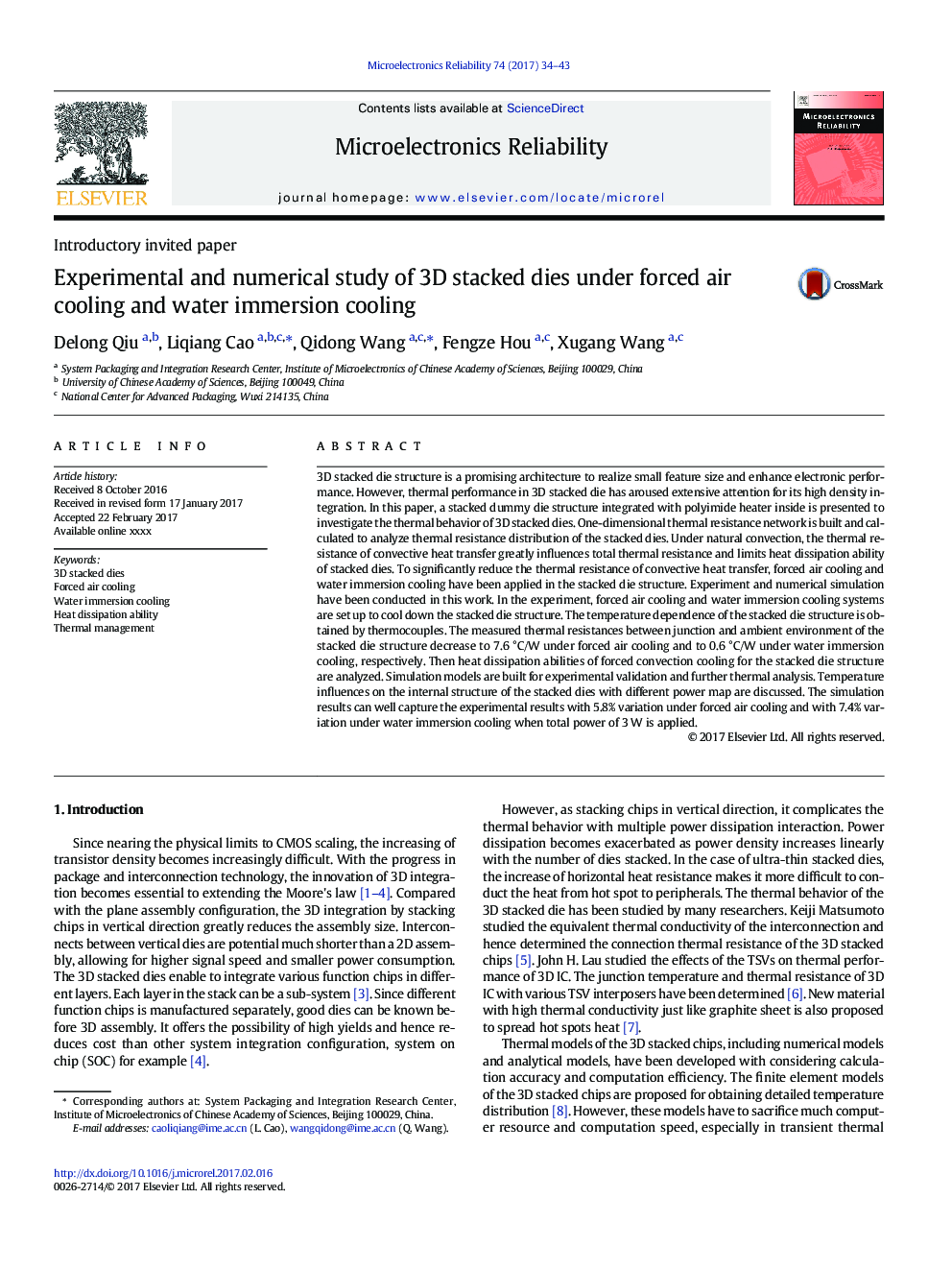| کد مقاله | کد نشریه | سال انتشار | مقاله انگلیسی | نسخه تمام متن |
|---|---|---|---|---|
| 4971549 | 1450526 | 2017 | 10 صفحه PDF | دانلود رایگان |
عنوان انگلیسی مقاله ISI
Experimental and numerical study of 3D stacked dies under forced air cooling and water immersion cooling
ترجمه فارسی عنوان
مطالعه تجربی و عددی از چرخه های سه بعدی تحت خنک کننده هوای مجاز و خنک کننده آب غوطه وری
دانلود مقاله + سفارش ترجمه
دانلود مقاله ISI انگلیسی
رایگان برای ایرانیان
موضوعات مرتبط
مهندسی و علوم پایه
مهندسی کامپیوتر
سخت افزارها و معماری
چکیده انگلیسی
3D stacked die structure is a promising architecture to realize small feature size and enhance electronic performance. However, thermal performance in 3D stacked die has aroused extensive attention for its high density integration. In this paper, a stacked dummy die structure integrated with polyimide heater inside is presented to investigate the thermal behavior of 3D stacked dies. One-dimensional thermal resistance network is built and calculated to analyze thermal resistance distribution of the stacked dies. Under natural convection, the thermal resistance of convective heat transfer greatly influences total thermal resistance and limits heat dissipation ability of stacked dies. To significantly reduce the thermal resistance of convective heat transfer, forced air cooling and water immersion cooling have been applied in the stacked die structure. Experiment and numerical simulation have been conducted in this work. In the experiment, forced air cooling and water immersion cooling systems are set up to cool down the stacked die structure. The temperature dependence of the stacked die structure is obtained by thermocouples. The measured thermal resistances between junction and ambient environment of the stacked die structure decrease to 7.6 °C/W under forced air cooling and to 0.6 °C/W under water immersion cooling, respectively. Then heat dissipation abilities of forced convection cooling for the stacked die structure are analyzed. Simulation models are built for experimental validation and further thermal analysis. Temperature influences on the internal structure of the stacked dies with different power map are discussed. The simulation results can well capture the experimental results with 5.8% variation under forced air cooling and with 7.4% variation under water immersion cooling when total power of 3 W is applied.
ناشر
Database: Elsevier - ScienceDirect (ساینس دایرکت)
Journal: Microelectronics Reliability - Volume 74, July 2017, Pages 34-43
Journal: Microelectronics Reliability - Volume 74, July 2017, Pages 34-43
نویسندگان
Delong Qiu, Liqiang Cao, Qidong Wang, Fengze Hou, Xugang Wang,
